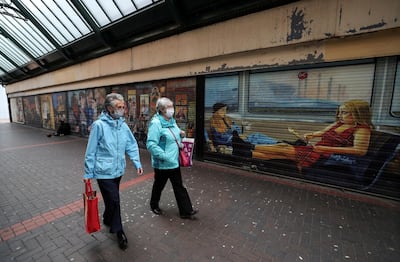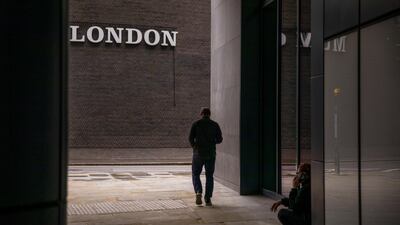Britain's unemployment rate rose to 4.5 per cent in the three months to August, its highest in more than three years, as coronavirus takes its toll on the country’s job market.
Employment fell by 153,000, almost five times the level expected by economists, taking the jobless rate to its highest level since 2017, data from the Office for National Statistics shows.
UK Chancellor Rishi Sunak said the government’s £190 billion ($247.86bn) package of support and comprehensive plan to protect jobs could not save every position but it offered hope.
“I’ve been honest with people from the start that we would unfortunately not be able to save every job," Mr Sunak said on Tuesday.
"But these aren’t just statistics, they are people’s lives.
"That’s why trying to protect as many jobs as possible and helping those who lose their job back into employment is my absolute priority."
Prime Minister Boris Johnson introduced a new system of restrictions for England on Monday to help control the spread of the coronavirus.
The Confederation of British Industry said increasing the government's testing regime would be a key part of securing an economic recovery.
The number of redundancies increased by 227,000 in the June-August period – the most since 2009 –according to the ONS data.
While the latest figures show there were almost 700,000 fewer people on the payroll than in March before the lockdown, of those out of work, about 300,000 are aged between 16 and 24, representing about 60 per cent of the fall in employment.
But there were some positive signs in the UK’s latest jobs data.
Tax office figures showed the number of staff on company payrolls rose by a monthly 20,000 in September, slightly reducing the total number of job losses by that measure since March to 673,000.
Meanwhile, the number of vacancies experienced its sharpest rise on record in the three months to September, although the total remained 40 per cent down when compared with a year earlier.
The Bank of England expects the unemployment rate to hit 7.5 per cent by the end of the year.
But BoE Governor Andrew Bailey repeated his warning on Monday that the economy could prove weaker than the central bank's forecasts.
"The latest batch of data show that the labour market has been somewhat weaker than previously thought and that the fallout from the Covid-19 recession is intensifying," said Paul Dales, chief UK economist at Capital Economics.
"What’s more, the prospect of the latest Covid-19 restrictions leading to the economic recovery stalling, if not going into reverse, means worse lies ahead."
The UK economy grew 2.1 per cent in August from July, far lower than economist forecasts of 4.6 per cent.
It was a worrying result as coronavirus restrictions were at their lowest during the summer and government support for the hospitality industry was at its highest through initiatives such as the Eat Out to Help Out scheme.

Mr Sunak on Friday expanded his new job support scheme – set to replace the existing furlough scheme on November 1 – to help businesses required to close amid the heightened restrictions.
Under Mr Sunak’s plans, the government will pay two thirds of the wages of employees in companies affected by the measures.



